- Home
- Alison Weir
Henry VIII
Henry VIII Read online
Contents
Title Page
Dedication
Praise
Acknowledgments
Introduction
1 - “A Most Accomplished Prince”
2 - “The Triumphal Coronation”
3 - “A Prince of Splendour and Generosity”
4 - “This Magnificent, Excellent and Triumphant Court”
5 - “A Perfect Builder of Pleasant Palaces”
6 - “The King’s House”
7 - “The Worship and Welfare of the Whole Household”
8 - “Such Plenty of Costly Provision”
9 - “Elegant Manners, Extreme Decorum, and Very Great Politeness”
10 - “Innocent and Honest Pastimes”
11 - “New Men” and “Natural Counsellors”
12 - “All Goodly Sports”
13 - “Merry Disports”
14 - “Rather Divine Than Human”
15 - “The Holy Innocent”
16 - “A Galaxy of Distinguished Men”
17 - “The King’s Painters”
18 - “Graceless Dogholes”
19 - “Obstinate Men Who Govern Everything”
20 - “Cloth of Frieze Be Not Too Bold”
21 - “The Best Dressed Sovereign in the World”
22 - “This Cardinal Is King”
23 - “The Pearl of the World”
24 - “Multitudes Are Dying around Us”
25 - “The Mother of the King’s Son”
26 - “The Eighth Wonder of the World”
27 - “One Man’s Disobedience”
28 - “A Proud Horse Tamed and Bridled”
29 - “All the Enemies of England Are Gone”
30 - “Next in Rank to His Majesty”
31 - “The Establishment of Good Order”
32 - “A Fresh Young Damsel”
33 - “Master Hans”
34 - “Noli Me Tangere, for Caesar’s I Am”
35 - “A Thousand Cases of Sweat”
36 - “Back to Your Wife!”
37 - “Above Everyone, Mademoiselle Anne”
38 - “Squire Harry Will Be God, and Do as He Pleases!”
39 - “Opprobrious Words”
40 - “The Lady Marquess”
41 - “The Triumph at Calais and Boulogne”
42 - “Anna Regina Angliae”
43 - “Here Anna Comes, Bright Image of Chastity”
44 - “The High and Mighty Princess of England”
45 - “The Image of God upon Earth”
46 - “That Thin Old Woman”
47 - “Thunder Rolls around the Throne”
48 - “Bound to Obey and Serve”
49 - “The Suppression of the Religious Houses”
50 - “The Most Joyful News”
51 - “The Very Pearl of the Realm”
52 - “A Sort of Knaves”
53 - “Nourishing Love”
54 - “Displeasant Airs”
55 - “I Have Been Young, and Now Am Old”
56 - “Is Not the Queen Abed Yet?”
57 - “Little, Sweet Fool”
58 - “A Nest of Heretics”
59 - “The Good Expectations of the King’s Majesty”
60 - “The Enterprise of Boulogne”
61 - “The Worst Legs in the World”
62 - “Painful Service”
63 - “The Rarest Man That Lived in His Time”
Bibliography
Notes and References
Henry VIII - ALISON WEIR
A Conversation with Alison Weir
HENRY VIII: - A Wonderful Subject for a Biography
Reading Group Questions and Topics for Discussion
Excerpt from Mary Boleyn
About the Author
By the same author
Copyright Page
This book is dedicated to
DAVID and CATHERINE
to mark the occasion of their marriage
PRAISE FOR ALISON WEIR
Henry VIII: The King and His Court
“Weir’s nose for detail, her sharpness of eye, and her sympathetic touch make this a feast for the senses. . . . [She is] one of the most evocative of popular historians.”
—Publishers Weekly (starred review)
“Entertaining . . . Weir is an immensely popular writer of books about European royalty, and her latest book gives ample evidence to her talent.”
—Booklist
Eleanor of Aquitaine: A Life
“An alluringly candid portrait of this most public yet elusive of medieval women.”
—The Boston Globe
“Evocative . . . A rich tapestry of a bygone age and a judicious assessment of her subject’s place within it.”
—Newsday
The Life of Elizabeth I
“An excellent account of the greatest of England’s remarkably great queens.”
—Daily Telegraph (London)
“An extraordinary piece of historical scholarship.”
—The Cleveland Plain Dealer
Acknowledgments
Of the hundreds of source books that I have used, I wish to acknowledge my particular indebtedness to the following: Simon Thurley’s The Royal Palaces of Tudor England; David Loades’s The Tudor Court; Neville Williams’s Henry VIII and His Court; David Starkey’s The Reign of Henry VIII, Henry VIII: A European Court in England , and Rivals in Power; Carolly Erickson’s Great Harry, Lacey Baldwin Smith’s Henry VIII: The Mask of Royalty, and Peter Brears’s All the King’s Cooks. I owe a great debt of gratitude to Dr. Simon Thurley and Dr. David Starkey, whose excellent books have made available to historians a wealth of unpublished contemporary sources. I must stress, however, that the conclusions in this book are entirely my own.
I wish to thank my editors, Will Sulkin and Anthony Whittome in the U.K. and Joanne Wyckoff in the U.S., and my agent, Julian Alexander, for their unfailing support and kindness. I should also like to thank my mother, Doreen Cullen, for selflessly giving up so many hours to act as my secretary, general amanuensis and counsellor; likewise—as ever—my husband Rankin, my children John and Kate, my stepfather Jim Cullen, and my cousin Christine Armour for rallying round and assisting me so readily, to help me meet my deadline.
I owe a further debt of gratitude to all the other kind and generous people who have given support and encouragement while this book was in preparation: Catherine Agnew, Moore and Jill Armstrong, Beverley Arthur, Angela Bender, Carol Bingham, Tracy Borman, Richard and Yvonne Burnett, Terrence Cahill, Lucinda Cook, Paul and Paula Danholm, Suzanne Dean, Julian L. Dexter Williams, David Driver, Paul Eaglen, Deborah Emberson, Kate Gordon, Lewis Hales, Julie Handley, Eileen Hannah, Jorg Hensgen, Bruce Heydt, Elizabeth Hines, Max Hull, Stephanie Hunt, Fraser Jansen, Roger Katz, Margaret Kirk, Louise Law-ton, T. Anna Leese, Arnold and Edna Mann, John and Pauline Marston, Lyn Mathew, Janet McL. Mackay, Mary Moore, Syd Moore, Brad Mortensen, Peter Razzell, Lily Richards, Margaret Samborn, Karin Scherer, Patrick Smith, Sue Stephens, Jerry Sullivan, Inga Walton, Kenneth and Elizabeth Weir, Margaret Weir, Ronald and Alison Weir, Martha Whittome, and Jon Woolcott.
To you all, may I say again, thank you from the heart.
Introduction
In 1517, the papal nuncio Francesco Chieregato arrived at the court of Henry VIII and was stunned by its magnificence. “The wealth and civilisation of the world are here,” he marvelled, “and those who call the English barbarians appear to me to render themselves such. I here perceive very elegant manners, extreme decorum and great politeness, and amongst other things there is this invincible King, whose acquirements and qualities are so many and excellent, that I consider him to excel all who ever wore a crown.”
Coming from a Venetian imbued with the culture o
f the Italian Renaissance, this was praise indeed, and a reminder of what Henry VIII achieved during the first decade of his reign. Today, we need such a reminder, because the splendours of Henry’s court are long vanished, and it requires a great leap of the imagination to reconstruct the reality from what few remains there are.
Henry VIII succeeded to the throne in 1509, to great acclaim. He had all the virtues expected of a Renaissance prince. Yet by the time he died in 1547, he had acquired the reputation of a tyrant whose hands were soaked in the blood of the many he had executed—among them two of his six wives. Because he married so many times, he has gone down in history as a veritable bluebeard. Over the centuries, the truth about the King has become blurred by his legend, which culminated in Charles Laughton’s caricature of him in the 1930s film The Private Life of Henry VIII. Thanks to this, Henry still lives in the popular imagination as a man who thought of nothing but chasing the ladies, and who threw chicken bones over his shoulder as he presided over court feasts in the great hall.
The reality, of course, was strikingly different. As a rule, Henry did not dine in the great halls of his palaces, and his table manners were highly refined, as was the code of etiquette followed at his court. He was in fact a most fastidious man, and—for his time—unusually concerned with hygiene. As for his pursuit of the ladies, there is plenty of evidence, but most of it fragmentary, for Henry was also far more discreet and prudish than we have been led to believe. These are just superficial examples of how the truth about historical figures can become distorted.
Fortunately, scholars during the last few decades have undertaken a vast amount of research on Henry VIII and his court, and it is now clear that many of our earlier perceptions of both must be revised. Henry was a complex personality of many talents, and there is so much surviving source material for his reign that we know even the most intimate details of his personal life. Furthermore, this man of exquisite taste and a grand sense of majesty established the most magnificent court ever seen in England. No English sovereign ever owned as many houses as Henry VIII, or spent so lavishly on a lifestyle deliberately calculated to enhance his own prestige. Few monarchs have been surrounded by so many talented and charismatic personalities. And few have ever been so controversial.
My aim in this book has been to draw together a multitude of strands of research in order to develop a picture of the real Henry VIII, his personal life throughout his reign, the court he created, and the people who influenced and served him. Hitherto, studies of the Henrician court have concentrated on household organisation, art and culture, or courtier factions. I aim to paint a far broader canvas, which incorporates all these themes and much more, and sets the life and reign of the King, for the first time ever, against a realistic portrayal of his court.
In an age of personal monarchy, the court was at the hub of royal government, but this is not a political history of the reign: my brief has been to record the events that help build up a picture of the life and ethos of the King and the court. Henry VIII’s wives naturally played a large part in the life of that court, but, having already written a book about them, I have taken care to avoid too much repetition: where events were dealt with in detail in that former book, they are touched upon briefly, and only where relevant, here. I have also taken the opportunity to revise some of my conclusions in The Six Wives of Henry VIII in the light of recent research.
Although this book is presented in a basically chronological format, the first third is largely devoted to setting the scene and describing the court and the royal palaces. This is a necessary prologue to the account of the King’s life and reign that follows, for without it much of the context of events would be blurred. However, the book is not just a descriptive account of Henry’s court and reign, but is packed with anecdotal evidence intended to bring to life this most colourful period of English history and the larger-than-life character who dominated it.
I have also attempted to describe and analyse the cultural and social development of the English court, and to this end have included every aspect of court life: the ceremonial and pageantry, state occasions, entertainments, sports, poetry and drama, art, music, religious observances, sexual and political intrigues, banquets and feasts, dress, transport, household organisation and administration, finance, hygiene, and even pets.
The Tudor court, however, was primarily the place where a host of persons, great and lowly, gathered about the King. Therefore, one of my chief aims has been to weave the lives of queens, princes, princesses, lords, ladies, privy councillors, knights, gentlemen, artists, craftsmen, and servants into the rich tapestry of court life, intrigue, and vicious faction fights.
In the notes and references at the end of the book, I have given details of the surviving buildings and artefacts connected with Henry VIII and his court. Where monetary values are quoted in the text, the modern equivalent (which is approximately three hundred times the sum quoted) is given in parentheses—with some surprising results. We should contrast the vast sums spent on clothes and royal meals, for example, with the meagre salaries paid to artists such as Hans Holbein.
Finally, a note about capital letters, which I have used for titles of household departments and officers but not for the names of rooms within the royal palaces. Thus, the department that provided for the King’s personal needs is referred to as the Privy Chamber, while the lodgings he occupied are called the privy chamber. Similarly, the Chapel Royal was the religious establishment of the court, whereas the chapel royal was a place of worship.
I hope that this book will convey to those who read it the same pleasure and sense of affinity with its subject that it afforded me while I was researching and writing it, that they will be able to make that great leap of imagination across the centuries and arrive at a very lively understanding of the subject, and that, for them, Henry VIII and his court will come to life.
Alison Weir
Carshalton, Surrey
13 March–17 September 2000
1
“A Most Accomplished Prince”
On 21 April 1509, the corpse of King Henry VII, ravaged by tuberculosis, was laid in state in the chapel at Richmond Palace, whence it would shortly be taken to Westminster Abbey for burial. Few mourned that King’s passing, for although he had brought peace and firm government to England and established the usurping Tudor dynasty firmly on the throne, he had been regarded as a miser and an extortionist.
The contrast between the dead King and his son and heir could not have been greater. The seventeen-year-old Henry VIII was proclaimed King on 22 April,1 which—most apt for a prince who embodied all the knightly virtues—was also St. George’s Day. The rejoicings that greeted Henry’s accession were ecstatic and unprecedented, for it was believed that he would usher in “a golden world.”2
William Blount, Lord Mountjoy, a courtier, expressed the national mood in a letter to his fellow humanist, the renowned Desiderius Erasmus:
I have no fear but when you heard that our prince, now Henry the Eighth, whom we may well call our Octavius, had succeeded to his father’s throne, all your melancholy left you at once. What may you not promise yourself from a prince with whose extraordinary and almost divine character you are acquainted? When you know what a hero he now shows himself, how wisely he behaves, what a lover he is of justice and goodness, what affection he bears to the learned, I will venture to swear that you will need no wings to make you fly to behold this new and auspicious star!
If you could see how here all the world is rejoicing in the possession of so great a prince, how his life is all their desire, you could not contain your tears for sheer joy. The heavens laugh, the earth exults. . . . Avarice is expelled from the country, extortion is put down, liberality scatters riches with a bountiful hand. Yet our King does not desire gold, gems or precious metals, but virtue, glory, immortality!3
To his contemporaries, Henry VIII was the embodiment of kingship. Thomas More’s coronation eulogy states that “among a thousand noble com
panions, the king stands out the tallest, and his strength fits his majestic body. There is fiery power in his eyes, beauty in his face, and the colour of twin roses in his cheeks.”4 Other evidence proves that this was not mere flattery. Henry’s skeleton, discovered in 1813, was six feet two inches in length. Henry was certainly of strong and muscular build: the Spanish ambassador reported in 1507 that “his limbs are of a gigantic size.”5 In youth, he was slim and broad-shouldered: his armour of 1512 has a waist measurement of thirty-two inches, while that of 1514 measures thirty-five inches at the waist, forty-two inches at the chest.
Several sources testify to Henry’s fair skin, among them the poet John Skelton, who called him “Adonis, of fresh colour.” His hair, strands of which still adhered to his skull in 1813, was auburn, and he wore it combed short and straight in the French fashion. For many years he remained clean-shaven. In visage, the young King resembled his handsome grandfather, Edward IV,6 with a broad face, small, close-set, penetrating eyes, and a small, sensual mouth; Henry, however, had a high-bridged nose. He was, wrote a Venetian envoy in 1516, “the handsomest prince ever seen,” 7 an opinion in which most contemporaries concurred.
The young Henry enjoyed robust good health, and was a man of great energy and drive. He had a low boredom threshold and was “never still or quiet.”8 His physician, Dr. John Chamber, described him as “cheerful and gamesome,”9 for he was quick to laugh and he enjoyed a jest. A Venetian called him “prudent, sage and free from every vice,”10 and indeed it seemed so in 1509, for Henry was idealistic, open-handed, liberal, and genial. Complacency, self-indulgence, and vanity appeared to be his worst sins—he was an unabashed show-off and shamelessly solicited the flattery of others. He was also high-strung, emotional, and suggestible. Only as he grew older did the suspicious and crafty streaks in his nature become more pronounced; nor were his wilfulness, arrogance, ruthlessness, selfishness, and brutality yet apparent, for they were masked by an irresistible charm and affable manner.
Kings were expected to be masterful, proud, self-confident, and courageous, and Henry had all these qualities in abundance, along with a massive ego and a passionate zest for life. He embodied the Renaissance ideal of the man of many talents with the qualities of the mediaeval chivalric heroes whom he so much admired. He was “simple and candid by nature,” 11 and he used no worse oath than “By St. George!” A man of impulsive enthusiasms, he could be naive.

 Richard III and the Princes in the Tower
Richard III and the Princes in the Tower Britain's Royal Families: The Complete Genealogy
Britain's Royal Families: The Complete Genealogy The Lady in the Tower: The Fall of Anne Boleyn
The Lady in the Tower: The Fall of Anne Boleyn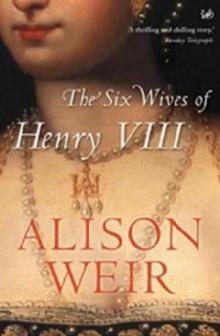 Six Wives of Henry VIII
Six Wives of Henry VIII Elizabeth of York: A Tudor Queen and Her World
Elizabeth of York: A Tudor Queen and Her World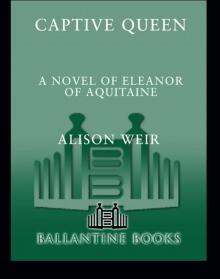 Captive Queen
Captive Queen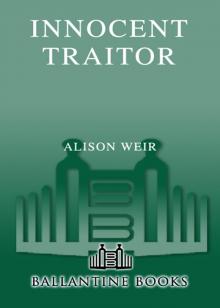 Innocent Traitor
Innocent Traitor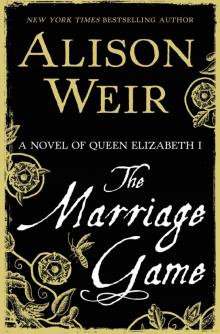 The Marriage Game
The Marriage Game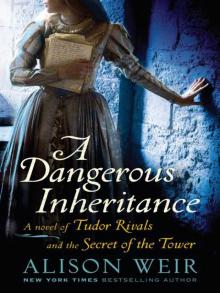 A Dangerous Inheritance
A Dangerous Inheritance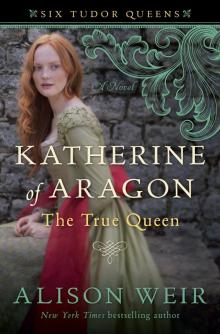 Katherine of Aragón: The True Queen
Katherine of Aragón: The True Queen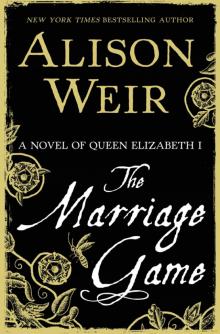 The Marriage Game: A Novel of Queen Elizabeth I
The Marriage Game: A Novel of Queen Elizabeth I Princes in the Tower
Princes in the Tower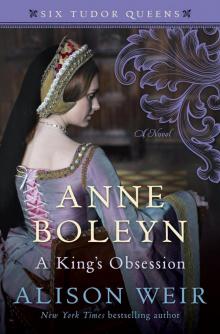 Anne Boleyn: A King's Obsession
Anne Boleyn: A King's Obsession Traitors of the Tower
Traitors of the Tower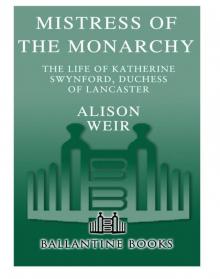 Mistress of the Monarchy: The Life of Katherine Swynford, Duchess of Lancaster
Mistress of the Monarchy: The Life of Katherine Swynford, Duchess of Lancaster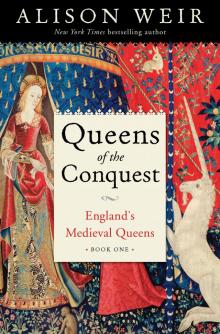 Queens of the Conquest: England’s Medieval Queens
Queens of the Conquest: England’s Medieval Queens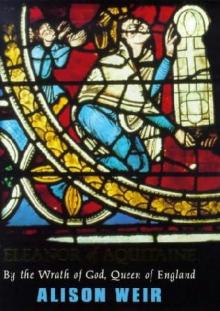 Eleanor of Aquitaine: A Life
Eleanor of Aquitaine: A Life Mary, Queen of Scots, and the Murder of Lord Darnley
Mary, Queen of Scots, and the Murder of Lord Darnley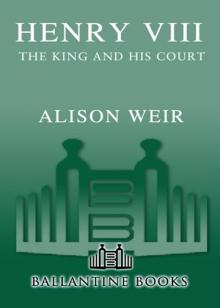 Henry VIII: The King and His Court
Henry VIII: The King and His Court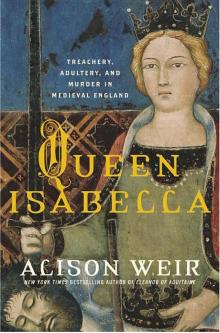 Queen Isabella: Treachery, Adultery, and Murder in Medieval England
Queen Isabella: Treachery, Adultery, and Murder in Medieval England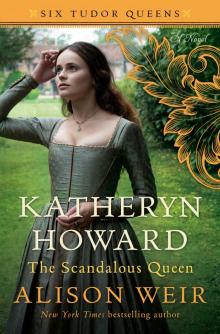 Katheryn Howard, the Scandalous Queen
Katheryn Howard, the Scandalous Queen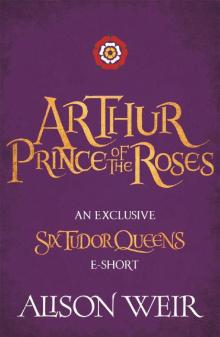 Arthur- Prince of the Roses
Arthur- Prince of the Roses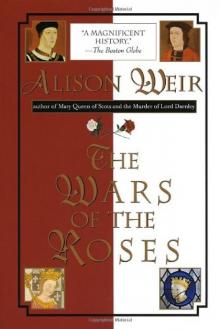 The Wars of the Roses
The Wars of the Roses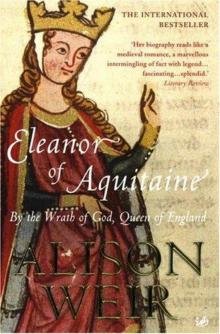 Eleanor of Aquitaine: By the Wrath of God, Queen of England
Eleanor of Aquitaine: By the Wrath of God, Queen of England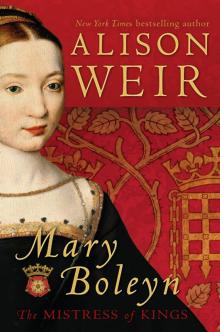 Mary Boleyn: The Great and Infamous Whore
Mary Boleyn: The Great and Infamous Whore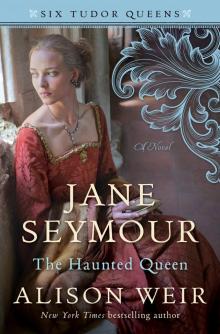 Jane Seymour: The Haunted Queen
Jane Seymour: The Haunted Queen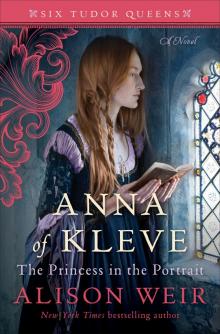 Anna of Kleve, the Princess in the Portrait
Anna of Kleve, the Princess in the Portrait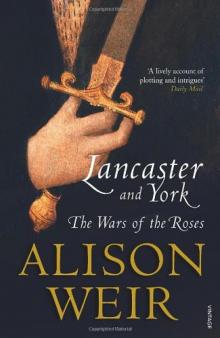 Lancaster and York: The Wars of the Roses
Lancaster and York: The Wars of the Roses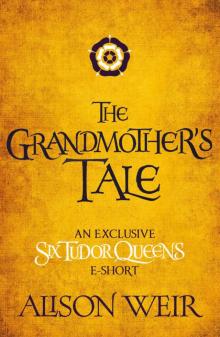 The Grandmother's Tale
The Grandmother's Tale The Princess of Scotland (Six Tudor Queens #5.5)
The Princess of Scotland (Six Tudor Queens #5.5)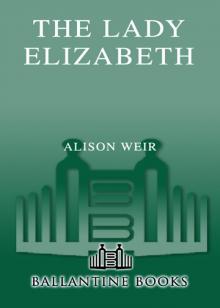 The Lady Elizabeth
The Lady Elizabeth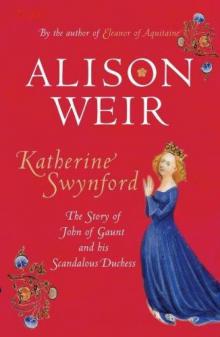 Katherine Swynford: The Story of John of Gaunt and His Scandalous Duchess
Katherine Swynford: The Story of John of Gaunt and His Scandalous Duchess The Curse of the Hungerfords
The Curse of the Hungerfords The Lost Tudor Princess: The Life of Lady Margaret Douglas
The Lost Tudor Princess: The Life of Lady Margaret Douglas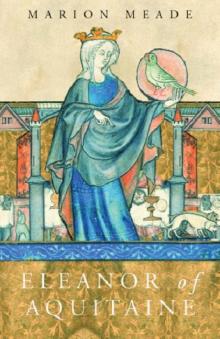 Eleanor of Aquitaine
Eleanor of Aquitaine Mistress of the Monarchy
Mistress of the Monarchy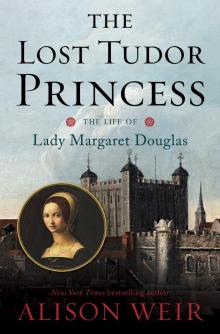 The Lost Tudor Princess
The Lost Tudor Princess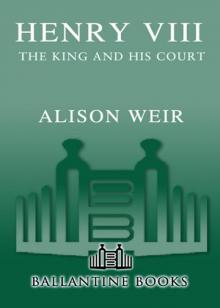 Henry VIII
Henry VIII Anne Boleyn, a King's Obsession
Anne Boleyn, a King's Obsession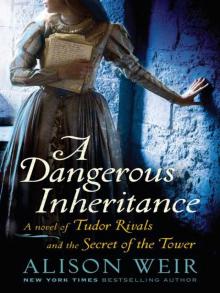 A Dangerous Inheritance: A Novel of Tudor Rivals and the Secret of the Tower
A Dangerous Inheritance: A Novel of Tudor Rivals and the Secret of the Tower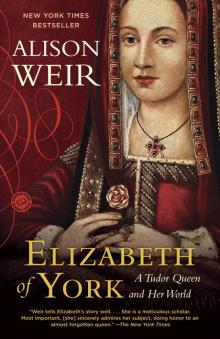 Elizabeth of York
Elizabeth of York Katherine of Aragon, the True Queen
Katherine of Aragon, the True Queen Katherine Swynford
Katherine Swynford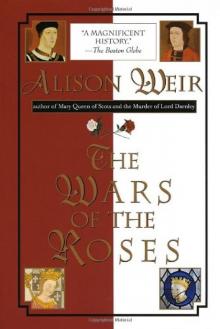 Wars of the Roses
Wars of the Roses Queens of the Conquest
Queens of the Conquest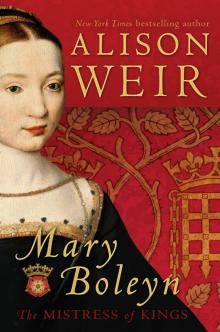 Mary Boleyn
Mary Boleyn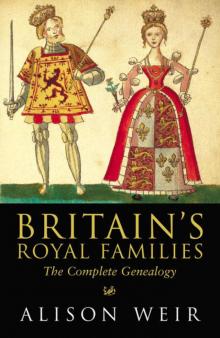 Britain's Royal Families
Britain's Royal Families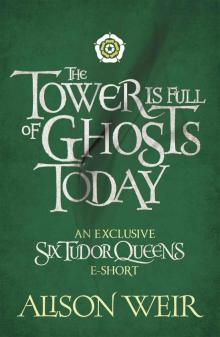 The Tower Is Full of Ghosts Today
The Tower Is Full of Ghosts Today Life of Elizabeth I
Life of Elizabeth I Anne Boleyn A King's Obssession
Anne Boleyn A King's Obssession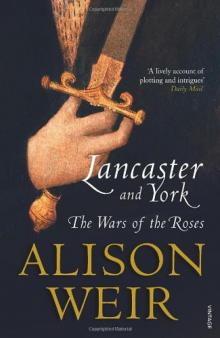 Lancaster and York
Lancaster and York Jane Seymour, the Haunted Queen
Jane Seymour, the Haunted Queen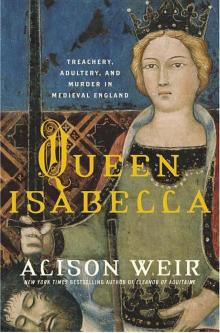 Queen Isabella
Queen Isabella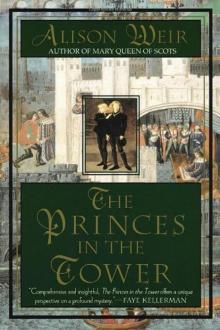 The princes in the tower
The princes in the tower